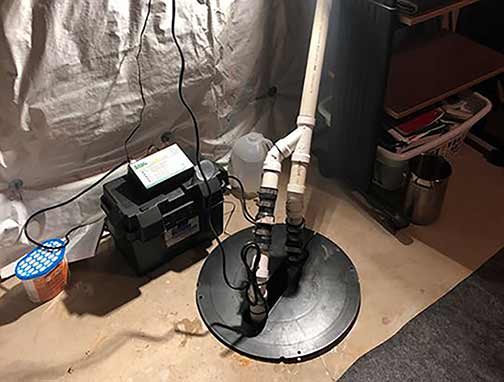
Yes, a functioning sump pump can prevent water damage and flooding in your basement by removing water as soon as it enters the basement. A sump pump will not stop water from entering your basement, but it will keep the water from damaging your building and belongings.
This is why sump pumps are commonly regarded as a home’s last line of defense against basement flooding. According to EPM: Elite Properties, if the home’s other flood protection measures fail to stop water from entering the basement, the sump pump ensures that the water is safely pumped out of the basement.
How does a sump pump work, and what are the things you need to know when installing a sump pump in your Des Plaines home?
How a sump pump works
Sump pumps protect your home by channeling any water that enters the basement into a pit (sump) located in the lowest part of the basement. Once the water reaches a certain level inside the pit, it is pumped out to a safe location outside your house.
To pump out the water, the system uses a float switch or pressure sensor to automatically activate the pump whenever the water inside the pit reaches a predetermined level. After the pit has been emptied, the same mechanism also deactivates the pump.
This process takes place without the direct involvement of the homeowner. In other words, sump pumps are fully automatic. As long as they are connected to power and in good working condition, they will protect your home from flooding every minute of every day.
This ability of a sump pump to operate on autopilot is its best quality, because it means you can go to work or vacation and sleep in peace, knowing your home is safe from flooding. However, there are key things you should know before installing a sump pump in your home.
What to know/do before installing a sump pump in your Des Plaines home
- Do a pre-installation survey
A pre-installation survey is essential for ensuring that whatever solutions you adopt to fix the flooding issues in your home will be effective. There are three main outcomes or insights you can expect from this survey:
- A better understanding of your home’s drainage problems. Water may be entering the basement as a result of hydrostatic pressure (common in low-lying areas and locations with a high-water table) or from excessive runoff during heavy rains.
- The survey also helps you adopt a holistic approach to solving the problem. For instance, instead of only installing a sump pump, which may not fully address the issues, you may also want to install a French drain in your basement.
- Thirdly, the survey assesses your home’s water handling needs to get a clear idea of the average amount of water that enters the basement, make the right decision on the correct pump size to buy (pumping capacity), and the depth of your sump.
- Choose the sump location
The location of the pit or sump basin should be in the lowest part of the basement to ensure that water will flow naturally into the pit. When digging your pit, ensure it complies with the residential building code for sump pumps. The size of the pit also influences the type of sump pump you can use.
- Plan other components
Plan the discharge location. It should be at least 20 feet from your building, so that the water will have no chance of flowing into the home’s foundation. In most localities, connecting a sump pump to the sewer system is illegal. You also want to install a check valve to prevent water from backflowing into the sump basin.
- Choose the right sump pump
You can buy either a pedestal pump or a submersible pump. Pedestal pumps are suitable for smaller pits, but they can be noisy. A submersible pump is not only quieter, but it is also more efficient. For your own and others’ safety, the sump pump should be plugged into a dedicated GFCI-protected outlet.
- Install a backup sump pump
A backup sump pump keeps your basement dry when your primary sump pump stops working during a power outage. For the backup sump pump, you have a choice between a battery-powered backup pump and a water-powered option. Battery-powered systems are ideal if the power outage doesn’t last for a long time. For the best protection, the backup system should have its own discharge pipe (in case the main discharge pipe is blocked).
- Consider adding a French drain
Installing a French drain in the basement will make your sump pump more efficient. A French drain is an unobtrusive, affordable, and easy-to-install method for draining waterlogged soils and solving drainage issues in basements. A French drain will accelerate the rate at which water is collected and removed from your basement.
Lastly, to facilitate quick repairs in case of problems, it is a good idea to always have backup parts for every part of the sump pump at home.
Finally, you should not perform the listed steps without contacting a trusted local plumber. A plumber’s experience is an indispensable asset when installing a sump pump in your home.

